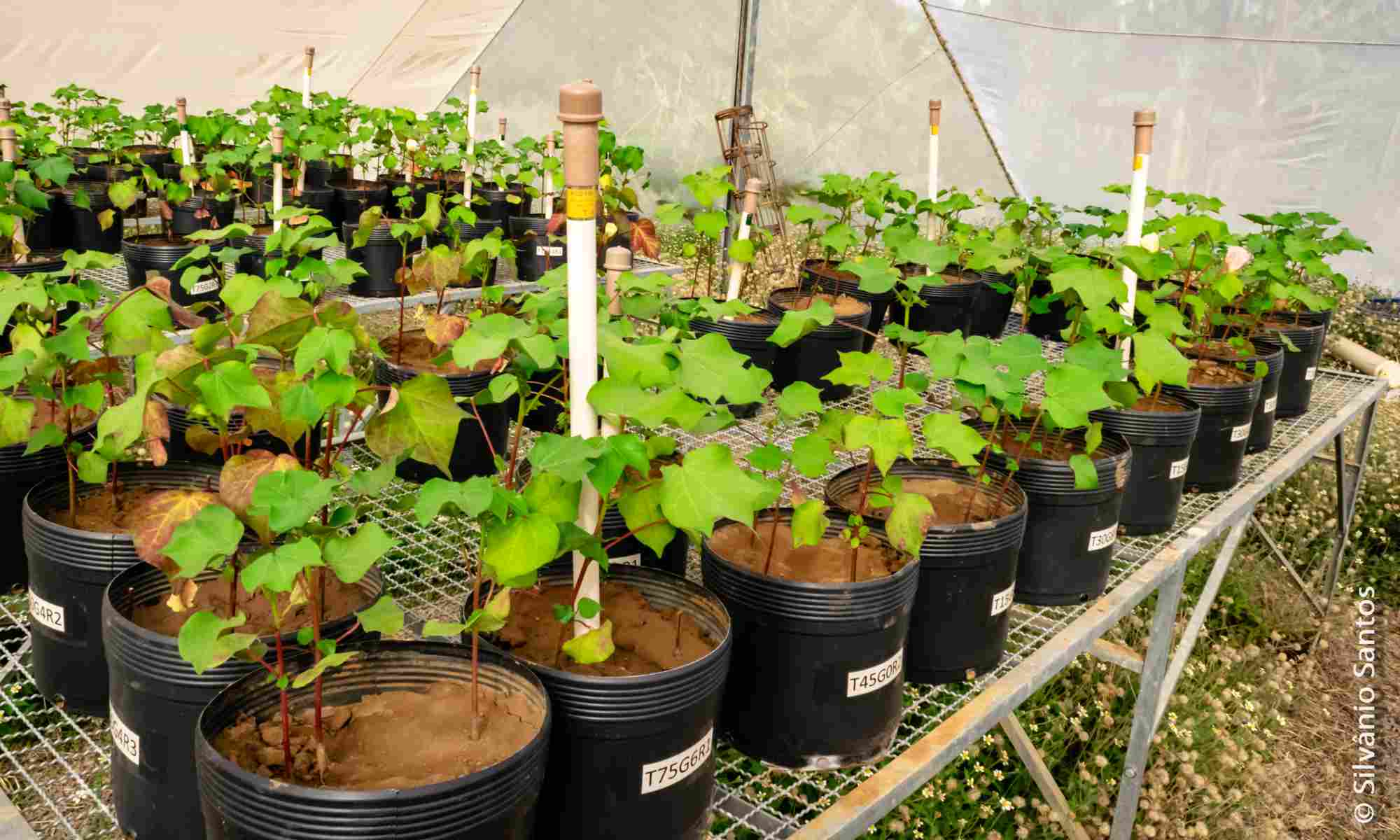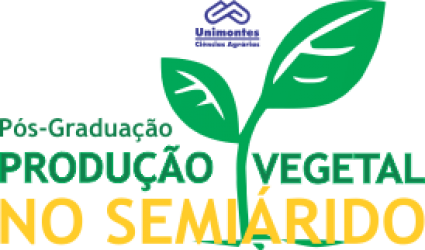- Version
- Download 18
- Tamanho do Arquivo 1.00 MB
- Data de Criação 16/06/2021
- Download
CRUZ, Artenis Jardel de Sousa. Crescimento e produção de genótipos de bananeira sob diferentes lâminas de irrrigação. 2012. 136 p. Dissertação (Mestrado em Produção Vegetal no Semiárido) – Universidade Estadual de Montes Claros, Janaúba, 2012.
A bananicultura no Norte de Minas Gerais está baseada quase que exclusivamente em duas cultivares, Grande Naine e Prata-Anã, esta com mais de 60% da área cultivada sob irrigação. Com a entrada da Sigatoka-negra no País e a iminente chegada do patógeno nesta região, além dos danos econômicos causados pela Sigatoka-amarela e Fusariose, estudos voltados ao lançamento de genótipos resistentes aos patógenos de grande impacto na bananicultura foram intensificados. Este trabalho foi desenvolvido com o objetivo de estudar o comportamento dos genótipos Prata-Anã, Grande Naine, Princesa, BRS Platina e FHIA-18 sob cinco níveis de irrigação (25%, 50%, 75%, 100% e 125% da evapotranspiração de referência – ETo), em seu primeiro ciclo na região Norte de Minas Gerais. O delineamento utilizado foi em blocos casualizados em esquema de parcelas subdivididas com três repetições. Nas parcelas foram casualizadas as lâminas de irrigação e nas subparcelas os genótipos, totalizando 75 subparcelas. Em cada subparcela havia 20 plantas, das quais apenas as seis plantas centrais eram úteis. A irrigação localizada foi utilizada por meio de emissores do tipo microaspersores, com intensidade de aplicação de 2,10 mm h - 1 . Foram avaliadas características vegetativas das plantas, aspectos produtivos (qualitativos e quantitativos), ciclos (vegetativo, produtivo e total) e uso eficiente de água comercial (UEA comercial). Na avaliação das características vegetativas dos genótipos foi utilizado outro fator de variação, o tempo (149, 171, 192, 220, 240, 260, 290, 310 e 338 dias após o transplantio – DAT). Não houve efeito significativo da interação tripla para qualquer variável estudada (altura de planta, perímetro de pseudocaule, número de folhas e área foliar total). A lâmina de 125% da ETo proporciona maiores valores para todas as variáveis estudadas, sendo o máximo crescimento observado na última avaliação biométrica feita, com 338 DAT. ‘Princesa’ e ‘FHIA-18’ apresentam maiores alturas de planta enquanto ‘Prata-Anã’ e ‘Grande Naine’, as menores. A produção é maior em todos os genótipos para a lâmina correspondente a 125% da ETo, contudo o UEA comercial apresenta comportamento inverso, com maiores resultados na lâmina de 25% da ETo. ‘Grande Naine’ apresenta maior produção e UEA comercial, e ‘FHIA-18’, dentre os genótipos do tipo Prata, apresenta maior produção e UEA comercial.
Palavras-chave: Manejo de Irrigação, tanque classe A, cultivares.
Growth and production of banana genotypes under different irrigation depth
Banana crop in the North of Minas Gerais is based almost that exclusively on two cultivars, ‘Grande Naine’ and ‘Prata-Anã’ of which more than 60% of the area is cultivated under irrigation. With the entrance of the black Sigatoka in the country and the imminent arrival of the pathogen in this region, besides the economical damages caused by Yellow Sigatoka and Fusarium wilt, studies on the release of genotypes resistant to pathogens of large impact on the banana crop it has been intensified. This work was carried out in order to study behavior of ‘Prata-Anã’, ‘Grande Naine’, ‘Princesa’, BRS Platina and FHIA-18 genotypes under five irrigation levels (25%, 50%, 75%, 100% and 125% of the reference evapotranspiration - ET o ), in their first cycle in the North of Minas Gerais. The used design was in randomized blocks in split-plot scheme with three repetitions. In the parcels they were at random the irrigation depths, and in the sub parcels, the genotypes, totaling 75 sub parcels. In each sub parcel there were 20 plants, of which only the six central plants were useful. The trickle irrigation was used by means of micro sprinklers, with application intensity of 2.10 mm h - 1 . The vegetative characteristics of the plants, productive aspects (qualitative and quantitative), cycles (vegetative, productive and total) and use efficient of commercial water (Commercial UEA) were evaluated. In the evaluation of the vegetative characteristics of the genotypes it was used other variation factor, the time (149, 171, 192, 220, 240, 260, 290, 310 e 338 days after the transplanting – DAT).There was no significant effect of the triple interaction for any studied variable (plant height, pseudostem perimeter, number of leaves and leaf area). The irrigation depth of 125% of ET o provides greater values for all the studied variables, being the maximum growth observed in the last biometric evaluation accomplished, with 338 DAT. ‘Princesa’ and ‘FHIA-18’ present the highest plant heights, while ‘Prata-Anã’ and ‘Grande Naine’, the lowest ones. The production is larger in all the genotypes for the irrigation depth corresponding to 125% of ET o, however the commercial UEA presents inverse behavior, with greater results in the irrigation depth of 25% of ET o . ‘Grande Naine’ shows the greatest production and commercial UEA, and ‘FHIA-18’, amongst the genotypes type Prata, presents the greatest production and commercial UEA
Keywords: Irrigation management, Class A Pan; cultivars.

